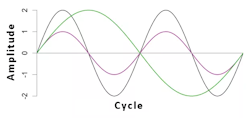Hearing Protection
Noise-induced hearing loss is the term for hearing damaged by exposure to excessive noise. The damage to hearing caused by excessive noise at work may not be apparent for years. Hearing loss can't be treated or cured, but it can be prevented.
Sound and Noise
Sound is what you hear. Our sensation of very small, rapid changes in air pressure.
Noise is any sound that you don't want to hear.
Sound is measured in two ways: decibels and frequency.
Amplitude is a measure of the pressure of sound and is measured in decibels. Sound waves transfer that pressure from place to place and are expressed in units on a logarithmic scale.
Frequency is related to a sound's pitch and is measured in units called hertz (Hz), or cycles per second. The pitch of a sound - how high or low it seems - is how you perceive its frequency.
Human hearing is most sensitive to frequencies between 3,000-4,000 Hz. That's why people with damaged hearing have difficulty understanding higher-pitched voices and other sounds in the 3,000-4,000 Hz range.
Hearing Conservation Program
Your workplace must have a hearing conservation program if employees are exposed to noise levels that are equal to or greater than 85 dBA average over an eight-hour period (called the 8-Hour Time Weighted Average). This is called the "Action Level." Check out course 751 Hearing Conservation Program Management for more in-depth information regarding hearing conservation.
Knowledge Check Choose the best answer for the question.
2-9. When must your employer establish a hearing conservation program?
You forgot to answer the question!


